You have no items in your shopping cart.
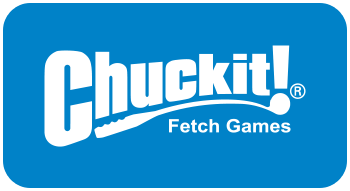
- Home /
- Blog
The Ultimate Guide to Choosing Quality Dog Toys for Every Breed
When it comes to the well-being of our canine companions, choosing quality dog toys is paramount. According to a report by the American Pet Products Association, pet owners in the U.S. spent over $1.3 billion on dog toys in 2022, highlighting the growing recognition of the importance of durable and safe playthings for dogs of all breeds. With an overwhelming array of options available on the market, including plush toys, chewables, and interactive gadgets, it can be challenging for pet owners to select the right products that cater to the specific needs of their dogs. Experts emphasize that not only do quality dog toys promote physical exercise, but they also stimulate mental engagement, contributing to a happier and healthier pet. In this comprehensive guide, we will explore the vital factors to consider when choosing quality dog toys tailored to the unique characteristics and play styles of different breeds, ensuring each furry friend gets the most out of their playtime.

Understanding Different Dog Breeds' Play Styles and Needs
When selecting quality dog toys, it's crucial to understand the play styles and needs of different dog breeds. For instance, low-energy dog breeds, such as Bulldogs and Basset Hounds, often prefer toys that require minimal physical exertion. Plush toys or interactive puzzles that stimulate their minds without demanding intense activity can keep them engaged while catering to their laid-back nature.
Conversely, high-energy breeds, like Border Collies or Huskies, thrive on toys that encourage more vigorous play, such as balls and Frisbees. These breeds need physical challenges to burn off energy, making durable and dynamic toys essential. Additionally, breeds that are known for their size or temperament may require specific considerations. For example, toys for small breeds should be appropriately sized to prevent choking hazards, while toys for large breeds should withstand their powerful jaws. By understanding these unique play styles, you can choose the right toys that cater to your dog's individual needs, ensuring they stay happy and healthy.
The Ultimate Guide to Choosing Quality Dog Toys for Every Breed
| Dog Breed | Play Style | Recommended Toy Types | Durability Level | Size of Toy |
|---|---|---|---|---|
| Labrador Retriever | Energetic and Playful | Fetch Toys, Tug Toys | High | Large |
| Beagle | Curious and Active | Scent Toys, Plush Toys | Medium | Medium |
| German Shepherd | Protective and Intelligent | Interactive Toys, Chew Toys | High | Large |
| Poodle | Playful and Smart | Puzzle Toys, Fetch Toys | Medium | Medium to Large |
| Bulldog | Laid Back with Short Bursts of Energy | Chew Toys, Soft Toys | Low to Medium | Medium |
Key Materials to Look for in Safe and Durable Dog Toys
 When selecting dog toys, understanding the materials used is crucial for ensuring both safety and durability. One of the most popular materials is rubber, known for its toughness and resilience. High-quality rubber toys can withstand heavy chewing and are often designed to bounce, which appeals to a dog’s natural instincts. Additionally, many rubber toys are non-toxic and can hold up against wear and tear, making them ideal for aggressive chewers.
When selecting dog toys, understanding the materials used is crucial for ensuring both safety and durability. One of the most popular materials is rubber, known for its toughness and resilience. High-quality rubber toys can withstand heavy chewing and are often designed to bounce, which appeals to a dog’s natural instincts. Additionally, many rubber toys are non-toxic and can hold up against wear and tear, making them ideal for aggressive chewers.
Another material to consider is nylon, which is often used in the construction of chew toys. Nylon toys come in various shapes and sizes, catering to dogs of all breeds. They provide an excellent option for maintaining dental health by promoting chewing while being durable enough to last through rigorous play. However, it’s essential to choose nylon toys that are specifically designed for dogs, as household items might splinter or break easily, posing a choking hazard.
Lastly, consider toys made from natural fibers like cotton or hemp. These materials are generally eco-friendly and safe for dogs to chew on. Cotton toys are soft yet durable and can provide comfort during playtime. Moreover, they are often washable, ensuring hygiene for your pet. Always look for well-constructed toys with reinforced seams to prevent tearing, ensuring your furry friend has a safe and enjoyable play experience.
How Size and Shape Affect Toy Selection for Various Breeds
When selecting dog toys, size and shape play a crucial role in ensuring the safety and engagement of various breeds. Smaller breeds, such as Chihuahuas and Dachshunds, benefit from lightweight toys that are easy for them to maneuver. These dogs often enjoy toys that are too small for larger breeds to play with, such as plush toys or rubber balls, as they can easily carry them around and engage in interactive play without the risk of injury. Conversely, larger breeds like German Shepherds and Great Danes require more robust toys that can withstand their powerful jaws and vigorous chewing. Heavy-duty materials and larger shapes help prevent choking hazards and promote healthier chewing habits.
In addition to size, the shape of the toy can significantly impact a dog's interest and behavior. Many dogs enjoy toys that can be tossed, fetched, or even tugged. For instance, a long, rope-style toy can provide a fun tugging experience for larger dogs, while a spherical toy can enhance the chase instinct in breeds that thrive on movement, such as Border Collies and Retrievers. Understanding the unique needs and play styles of different breeds ensures that the selected toys not only entertain but also promote physical and mental health in dogs of all sizes.
The Importance of Interactive and Mentally Stimulating Toys
When it comes to selecting the right dog toys, interactive and mentally stimulating options play a crucial role in your dog's overall well-being. These toys go beyond mere entertainment; they engage your dog’s mind, challenge their problem-solving skills, and can significantly reduce boredom. High-energy breeds, for example, thrive on toys that require them to think and engage, helping to channel their energy positively. From treat-dispensing puzzles to tug-of-war toys, the right interactive toys can turn playtime into an enriching experience.
Moreover, mentally stimulating toys serve as a great way to keep your dog occupied while you're busy. They can help prevent destructive behaviors that often arise from boredom, such as chewing on furniture or excessive barking. Utilizing a variety of interactive toys can cater to different learning styles and preferences among breeds. Additionally, rotating toys regularly can keep your dog interested and stimulate their cognitive function, making playtime a beneficial and enjoyable experience for both you and your furry friend.
The Importance of Interactive and Mentally Stimulating Toys for Dogs
Recognizing Signs of Wear and When to Replace Dog Toys
 When selecting dog toys, it's crucial to recognize the signs of wear, as this can significantly impact your dog's safety and enjoyment. Over time, toys may develop frayed edges, cracks, or missing parts that can pose choking hazards or lead to injuries. A squeaky toy that has seen better days might lose its sound or become too soft, altering your dog’s interest and engagement. Regularly inspecting toys for these wear signs can help you determine when it’s time for a replacement.
When selecting dog toys, it's crucial to recognize the signs of wear, as this can significantly impact your dog's safety and enjoyment. Over time, toys may develop frayed edges, cracks, or missing parts that can pose choking hazards or lead to injuries. A squeaky toy that has seen better days might lose its sound or become too soft, altering your dog’s interest and engagement. Regularly inspecting toys for these wear signs can help you determine when it’s time for a replacement.
Another key factor in choosing quality toys is understanding your dog's play style. For aggressive chewers, toys made from durable materials resistant to tearing and puncturing, such as rubber or tough nylon, are ideal. If your dog tends to play gently, plush toys may suffice, but these should still be monitored for any significant wear. Keeping a rotation of various toys can also help maintain your dog's interest while ensuring you can quickly identify those that have reached the end of their life span. Always prioritize safety and quality to ensure a fun and secure playtime for your furry friend.
Related Posts
-

How to Choose the Best Good Quality Dog Toys for Your Furry Friend
-

7 Compelling Reasons Why Good Quality Dog Toys Are Essential for Pet Retailers
-
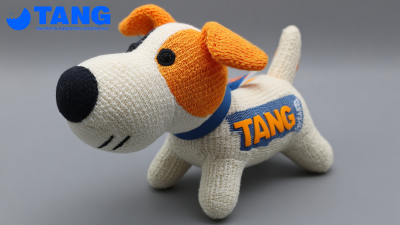
Unleashing Excellence in Dog Toys Crafted by China's Premier Manufacturing Factory
-
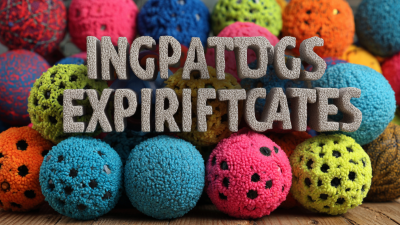
Navigating Import Export Certifications for Best Dog Toys a Complete Guide for Global Buyers
-
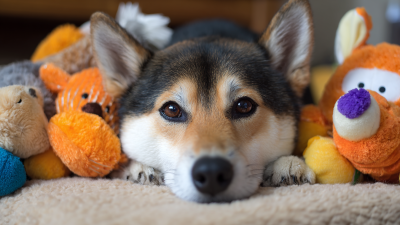
Unlocking Quality Suppliers for Best Play Dog Toys Proven Strategies for Global Buyers
-
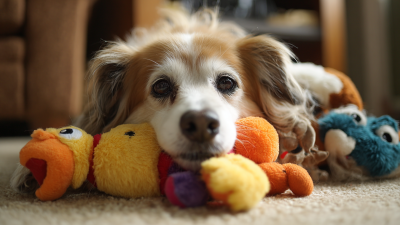
How to Choose the Best Play On Dog Toys for Your Furry Friends
